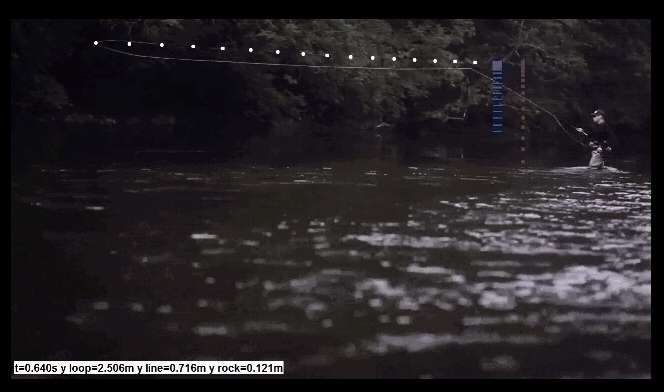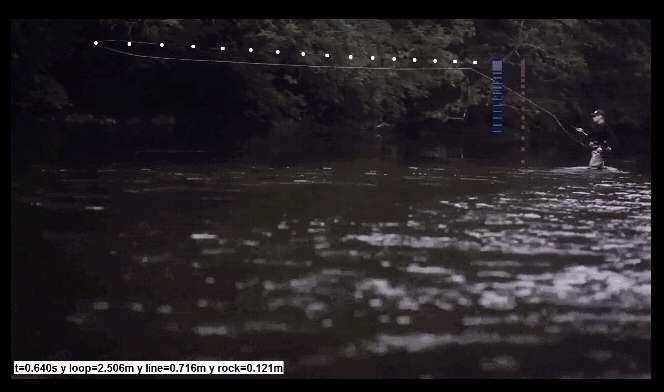Look closely at the ones at the end; the dangling line doesn't move away from the rod leg until it starts picking up line from the ground.
Cheers, Paul
Moderator: Torsten
Graeme,What he left out was the bit about the line ALSO being supported at the loop's end through tension induced by the fly leg. ...
Tension from the rod tip is sufficient to prevent free fall of the rod leg near the loop, but any drag acting purely in a horizontal direction will build on that existing tension.
and
If Gordy had remembered to include that information, he could have avoided going on about upwards lift in an inclined section of the loop. You were so close Gordy!
So applying your idea how much upward force is coming from the rod tip and/or drag forces on the rod leg in this frame of Chris Rowen's cast?The first principle is that you must not fool yourself — and you are the easiest person to fool.
and
It doesn't make any difference how beautiful [or simple ] your guess is, it doesn't make any difference how smart you are, who made the guess, or what his name is. If it disagrees with experiment, it's wrong.

Paul,Don’t you agree that the momentum direction of the fly leg plays a part in loop propagation?

Whose assumption is that?gordonjudd wrote: ↑Mon Jul 01, 2019 6:36 pm the assumption is the fly leg will soon reach an equilibrium angle such that the weight of the fly leg is balanced by the upward force of form drag on that inclined length of fly leg.